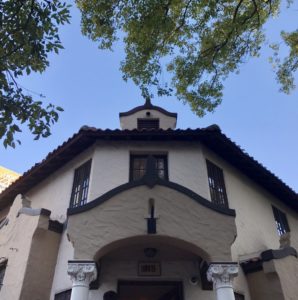In September 2017, our REACH research team visited Orlando to meet with our third multifamily case study participant. Formed in 2012, this partner is a nonprofit organization specializing in mixed-income multi-family housing and neighborhood transformation. Different from our other multi-family housing developer partners, this  group partnered with a research-based institute that champions community-based input through the formation of local “street teams” which include, residents, area experts, and nonprofit organizations. Also, this project collaborated with local partners, such as hospitals, banks or churches to ignite neighborhood transformation together, and help solve some of the local, complex social challenges.
group partnered with a research-based institute that champions community-based input through the formation of local “street teams” which include, residents, area experts, and nonprofit organizations. Also, this project collaborated with local partners, such as hospitals, banks or churches to ignite neighborhood transformation together, and help solve some of the local, complex social challenges.
Team members conducted two interviews with the organization’s executive director, finance director, and a partnering institute director, questioning “how” and “why” they believe that health strategies can be integrated into their community projects, mainly their multifamily units. Addressing community health and wellness, their major goal is to collaborate with residents and local nonprofits to create a mix of high-quality facilities, programs, and services that enhance the quality of life and increase life expectancy for all, regardless of income, across the entire community development. As they described, they are not only aiming to provide affordable housing to all levels of income generation, but also to commit to bringing fresh and nutritious food, weekly occurrences of exercise opportunities, high quality patient care, health and wellness facilities and services, special programs designed to improve health and wellbeing, career education opportunities especially for children, as well as safe spaces to the residents.
To further explore the development stories behind this project, the REACH team connected via phone with the private multifamily developer based out of Atlanta, GA. Though their focus on health and wellness originated with children, they have now adopted a more holistic approach with substantial investment in wellness and enjoys working with these types of holistic community development organizations. This conceptualization stems from running a stable, safe, and accessible housing development. One aspect of the conversation included how if you run “good” housing with services, good customer service and safety…it becomes a beautiful, walkable place that could potentially be LEED certified. The REACH team also discussed the benefits of ‘building to hold,’ where developers remain the owner and/or operator of the property. This for-profit developer agreed that being a long-term holder makes you build better properties. The REACH team inquired about awareness of the WELL Building Standard or other building health certification systems, wondering about the scope of awareness and research that the developers hold. While the developer partner had heard of WELL, they had not yet dug into its details. Continuing the conversation with this particular developer will be important, as we concluded the conversation speaking about community engagement, shared-use agreements with the local YMCA next to the property site, aging in place, and the prospects of gathering baseline resident health data. These are all critical alignments in the emerging topic of building a business case for health within multifamily developments.
